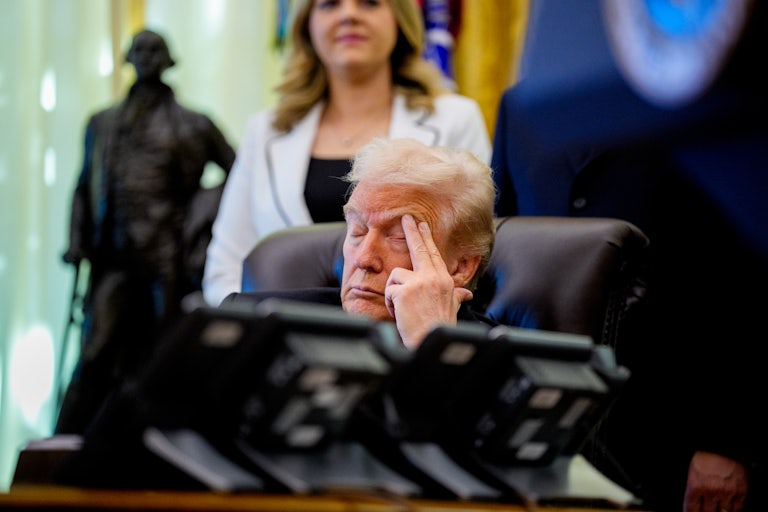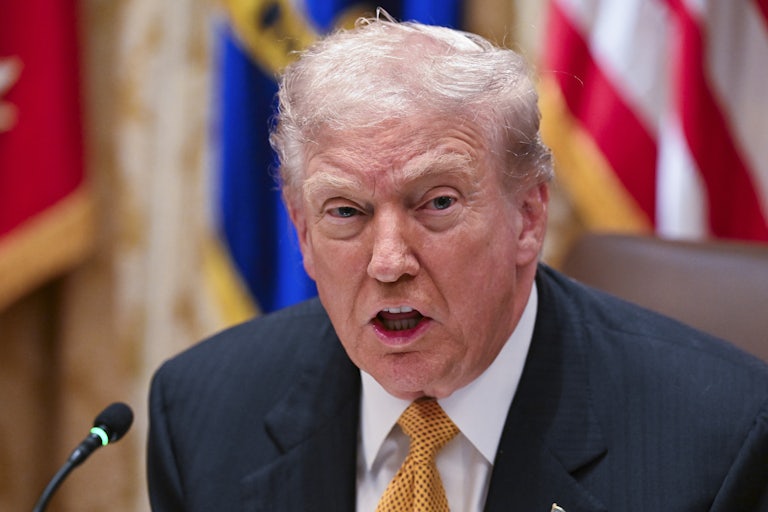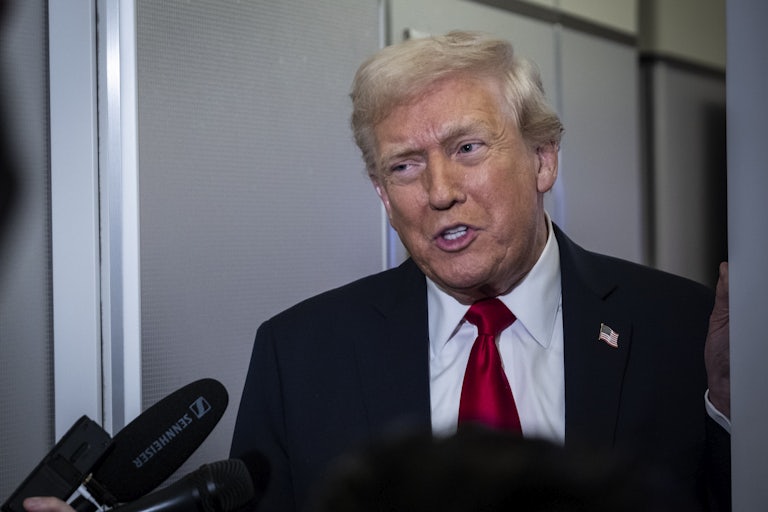Trump Is Having the Dumbest Fight With His Ballroom Architect
Donald Trump and his handpicked architect can’t agree on one massive detail.

The president’s ballroom obsession has put him at odds with the project’s architect, who doesn’t see eye to eye with him on the ballroom’s proposed size.
Donald Trump handpicked James McCrery II for the job. But several insiders that spoke with The Washington Post said that the two have not agreed on the scope of the project, with McCrery reportedly arguing that the 90,000-square-foot blueprint would overshadow the 55,000-square-foot White House mansion, violating basic architectural principles.
A White House official acknowledged that the pair has disagreed but would not provide specifics.
“As with any building, there is a conversation between the principal and the architect,” the unidentified official told the Post. “All parties are excited to execute on the president’s vision on what will be the greatest addition to the White House since the Oval Office.”
After promising Americans in July that his ballroom proposal would “be near but not touching” the White House East Wing, Trump completely razed the FDR-era extension in October, plowing forward without prerequisite approval from the National Capital Planning Commission or the express permission of Congress. Conveniently, Trump started demolition during the government shutdown, when the NCPC was consequently closed.
The Trump administration said that the forthcoming 90,000-square-foot event space will be capable of hosting 650 people, a 200-person bump from current maximum seating at the White House East Wing. But real estate experts have since pointed out that the possibilities of that square footage should be much broader, considering that a space of that size will be roughly equivalent to two football fields.
The project’s price tag also inexplicably grew by 50 percent after Trump began tearing down the East Wing. What Trump had originally pitched as a $200 million project was instead referred to in late October as a $300 million development plan. The White House suggested that the project would be funded, in part, by some of the country’s wealthiest families and biggest corporations, including the likes of Apple, Google, Amazon, Microsoft, and Meta.
Some major players in the defense industry with massive federal contracts, including Lockheed Martin and Palantir, have also forked over significant cash to develop the ballroom, though it’s unclear what they might get out of a venue designed for dancing.
The White House’s partial destruction is, ultimately, another illustration that the country’s constitutional system of checks and balances has eroded. The international real estate mogul’s desire to destroy the government—and with it, the architectural face of American democracy—has received practically zero pushback from his allies in Congress, who appear all too willing to sit back as Trump courts billionaires to fund his golden banquet hall.
Administration officials close to the project told the Post that Trump has, at times, micromanaged his eponymously styled ballroom, spearheading frequent meetings about its design. Other reports indicate that he has become so fixated on his renovation project that he has literally wandered away from his presidential duties in order to admire its progress.








